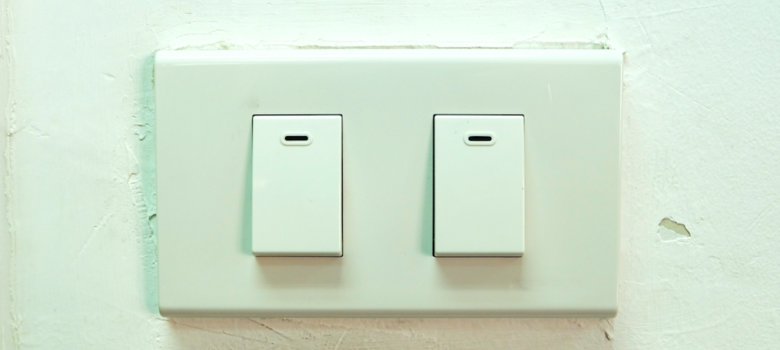
1
Only 5% of the power drawn by a phone charger is used to charge the phone – so remember to turn it off when you are done!
2
A typical microwave uses more electricity to keep its digital clock on standby than it does heating food.
3
Renewable energy creates three times more jobs than the fossil fuel industry.
4
In the average home, 75% of the electricity used to power electronics is consumed while the products are turned off (on standby). Each TV or computer left on standby is estimated to cost you 2p per hour.
 5
5
If everyone boiled only the water they needed every time they used the kettle, we could save enough electricity in a year to power the UK’s street lights for nearly 7 months.
6
Turning the thermostat down just 1°C saves 8% in heating costs.
7
A fridge freezer can account for up to 5% of a household’s annual electricity bill. Defrosting it regularly could save you quite a bit of money.
8
Laptops use up to 85% less electricity than desktop PCs.
9
Insulating your hot water cylinder could save you approximately £150 a year. If your tank is already lined with factory foam, savings could amount to £20-30 a year.
10
Installing external wall insulation can prevent up to 40% of heat loss from your home.
11
A new gas boiler is normally about 25% more efficient than a 20 year-old boiler. You could save up to £270 a year on bills by replacing it.
12
Your radiator also emits heat out of the side facing the wall. If your walls are un-insulated, this can leak straight through to outside. Stick radiator reflectors behind them to save yourself money and keep your house warm.
13
Washing clothes at 40°c uses a third less energy than a 60°c cycle.
14
Turning your thermostat down one degree can save nearly £100 per year.
15
Up to 4% of household heat can be lost through an uninsulated chimney.
Think we missed something? Do you have a different opinion?
Comment below to get your voice heard…












A surprising and useful article, thanks!
As a reader from Australia, I’d point out that:
I believe points similar to 6 and 14 would also apply. for air conditioning in the other way, i.e. turning the thermostat up a degree or two could save a very significant amount of energy. It would probably be healthier.too, by reducing the thermal shock between the natural temperature and the artificial one.
Thanks for this Baljeet!
Some of these are outdated or complete nonsense.
TV’s costing 2p an hour on standby? In the days of huge CRT’s perhaps. Even on an expensive tariff of 15p/kWh they’d have to be drawing over 130W for that! A modern LCD TV won’t even draw that much in use. 0.1W is a more realistic which works out at less than 14p a year. A computer in sleep will draw more, but still only 10-15w – 10% of the quoted figure.
Speaking of computers, a laptop doesn’t use any less energy than an equivalent desktop, laptops are often just lower powered to make them portable and cost much more for equivalent performance.
There’s no way defrosting the freezer could save £100. Typical running cost for a fridge freezer is less than £50 a year. Ice won’t make it cost 3x as much (and if £50 is 5% of your bill you’re paying too much as well)
I don’t dispute that turning down thermostats or increasing insulation can save energy and therefore money, but given the glaring errors I’ve no faith in the rest of the figures.
I’m all for being economical, but not with the truth.
Hi John – thanks for your feedback!
Having had another look at the article, I agree that I got a bit carried away with the defrosting figure and have now adjusted it! I disagree that a freezer costs less than £50 a year to run though – obviously it varies greatly depending on things like its size, how efficient the model is and how full you keep it, as well as your energy tariff. Unless you have a very small freezer indeed, (and I did specify a fridge-freezer), they are estimated by most sources to cost between £50-85 to run annually.
Re TVs and computers/laptops, we got those figures are from recent and reputable sources.. To quote Npower, ‘Most 21 inch TVs use about 1 unit of electricity to power approx 10 hours of viewing – that’s about 2p an hour. […] The average PC needs one unit of electricity (roughly 20p) to run for three hours – that’s about 6-7p an hour. A desktop computer costs around £24 a year to run – but laptops are much cheaper at just £4 a year.’
Hope I have answered some of your concerns. We would never deliberately mislead our readers and this blog was meant to be a bit of fun. I’d be interested to know where your figures come from 🙂
Cheers!
Ellen
Ellen, thank you for your response.
My initial wording may have come across a bit harsh. I didn’t mean to suggest you were deliberately misleading anyone, and I accept that there are lots of people who still have older less efficient kit, but a lot of the ‘low hanging fruit’ has been ‘picked’ over the last few years (particularly since the 1w initiative of 2010) and a lot of the old tips are getting a bit long in the tooth. The big uses of electricity now are space and water heating (as flagged up by a number of your tips), and I agree that small changes there can have remarkable effects on overall usage. Electric showers can be a big consumer that can catch people out (Our electric shower accounted for 12% of our annual usage until we replaced it with a mixer supplied by the gas boiler). Gadgets (driven by the smartphone revolution) are really quite efficient, and the only way to make a big saving there is to just not use them (which isn’t a real solution to my mind).
Regarding the freezer, I’ll admit I was basing it on my own Fridge Freezer, which while large is A++ rated (although I did do a cursory Google to see if my figure was reasonable) but given how long Fridges & freezers can last there are no doubt plenty of 25+ year old units around to bring the average up.
1 unit per 10 hours viewing isn’t unreasonable for an older set, It works out at 100W (since 1 unit is 1kWh or 1000Wh) but that’s for use. The blob post talks about _standby_ draw which will be much lower. Any flat panel will be less than 20W (0.4p), but anything built since 2010 shouldn’t draw more than 1W and many will draw less.
When CRT’s were more common, it was necessary to warm up the tube before use, and since that could take some time when cold the standby mode would keep the tube heaters on for a quick start, and that really did use a lot of juice, but it’s just not the case any more. (The reference to a 21″ set makes me wonder how old Npower’s figures are, since that’s a pretty small set by modern standards)
PC’s and laptops, I think explained my reasoning in my post. It’s comparing apples and oranges. A scooter uses less fuel than an HGV but scooters wouldn’t make a cost effective way of stocking supermarkets.
But to expand on my point. A low end PC, particularly one less than five years old will use no more power than a laptop. There are two reasons Npower’s figures may differ:
1) Gaming PC’s are a thing, and Gaming desktops are more common than Gaming laptops. A powerful graphics chip can double or even triple a computers peak energy use, dragging the average up, even though they are doing a specific job.
2) They are just out of date. Ten to fifteen years ago, people didn’t care so much about the energy efficiency of their computers, they wanted them faster, but they did care about run time on laptops, so a lot of effort was put into increasing the efficiency of those laptops, even if it meant they weren’t as fast as desktops. Since then performance has plateaued and desktops use much less energy than they did before and laptops perform better, but performance/Watt is the same while laptops cost more to purchase.
(That said, given the trouble Npower have producing an accurate bill for energy used, I’d be interested to know how they came about those figures.)
I don’t have any single source for my figures, they are drawn from years of being a tech enthusiast and my experience across many areas (including thegreenage), as I have been pushing to reduce my consumption, even going as far as replacing my relatively ‘inefficient’ compact fluorescent lights with nice new LED filaments that can use 1/3 to 1/2 the energy for the same amour of light as the earlier energy savers (e.g. 18w to 6w). There was also an aesthetic reason for replacing them, since at £4-£5 a lamp they will take about 10 years to pay for themselves, but they look much nicer.